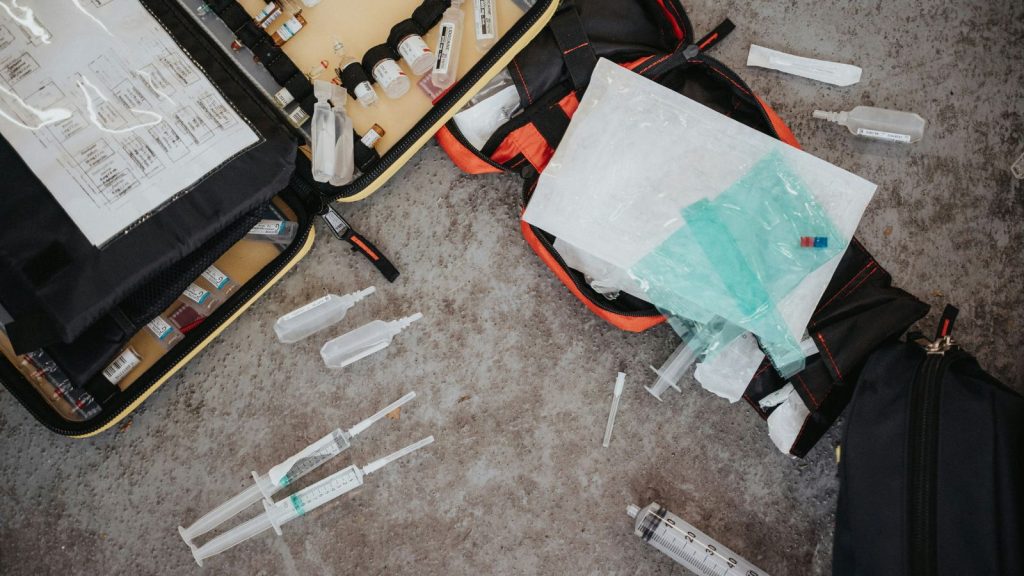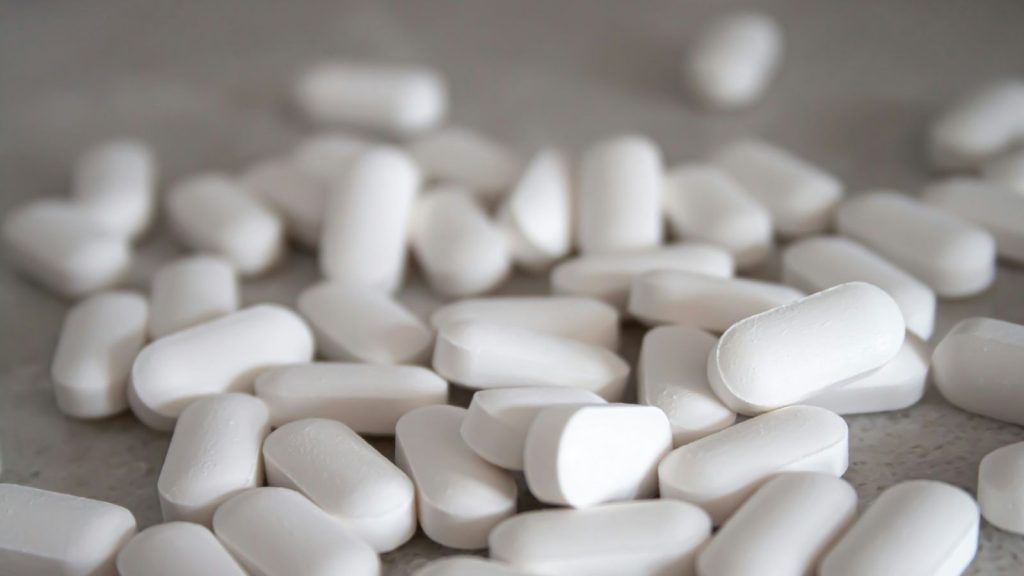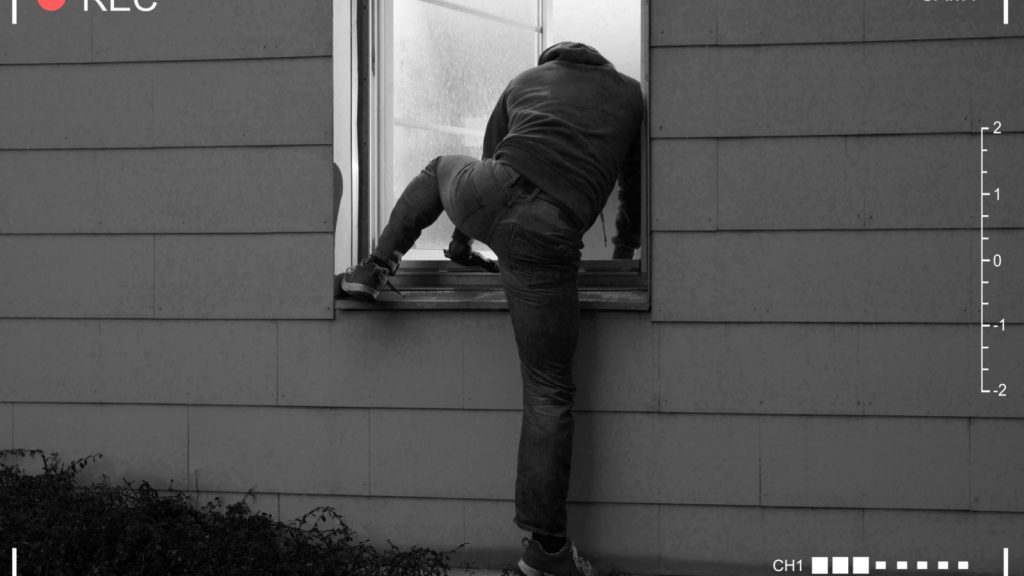Remember frantically searching through bathroom cabinets for a bandage while a child cries over a scraped knee, or realizing we have nothing useful when someone gets a nasty burn in the kitchen? After years of cobbling together makeshift first aid supplies from whatever we could find around the house, we finally put together a proper family first aid kit that actually works when we need it.
Most commercial first aid kits are either overpriced collections of tiny, useless items or overwhelming medical supply catalogs that would require a nursing degree to navigate. We wanted something practical – a kit stocked with supplies we’d actually use for the real injuries that happen in everyday family life.
And a kit that would see us through common basic first-aid issues in a grid-down or crisis situation.
Our approach focuses on the 80/20 rule: covering 80% of the injuries you’re likely to encounter with 20% of the supplies. We’re not preparing for wilderness emergencies or major disasters here. We’re building a kit for the cuts, burns, bumps, and everyday mishaps that happen when you’re living with kids, cooking dinner, or working around the house.

Why Most Store-Bought Kits Fall Short
After trying several pre-made first aid kits, we realized most are designed more for marketing than actual emergencies. They’re packed with dozens of tiny adhesive bandages that don’t stick well, single-use packets of antibiotic ointment that are impossible to open when you need them, and mysterious items that most people don’t know how to use.
The problem with these kits is they’re designed by committees trying to check boxes rather than by families who’ve actually dealt with common injuries. You end up with 47 different items you’ll never use and missing the three things you actually need.
We decided to build our own kit based on what we’ve learned works through years of parenting, cooking, and general household living. Our kit prioritizes quality over quantity and focuses on supplies that are genuinely useful for typical family emergencies.
Essential Categories for Your Family First Aid Kit
We organize our kit into four main categories: wound care, medications, tools, and emergency information. Each category serves a specific purpose, and we’ve learned to stock items that pull double duty whenever possible.
Wound Care Supplies

This is the heart of any family first aid kit. Most injuries in the home involve cuts, scrapes, or burns, so these supplies get the most use.
For adhesive bandages, we skip the tiny strips that come in most kits and stock various sizes of quality bandages. We keep a box of standard 1-inch bandages for everyday cuts and scrapes, plus larger 2-inch bandages for bigger injuries. The cheap bandages fall off as soon as they get wet, so we invest in name-brand adhesive bandages that actually stay put.
We also keep several rolls of medical tape and gauze pads in different sizes. Unlike adhesive bandages, gauze and tape can handle any size wound and won’t run out as quickly. For our family of four, we go through far more gauze and tape than individual bandages, especially during the summer when the kids are outside more.
Antibiotic ointment is essential, but we learned to buy the tubes rather than single-use packets. The packets are nearly impossible to open when you’re dealing with a bleeding child, and you can never get enough ointment out of them anyway. A tube of antibiotic ointment lasts us about two years and covers dozens of cuts and scrapes.
For burns, we keep a tube of aloe vera gel and several instant cold packs. Burns happen frequently in the kitchen, and having proper treatment immediately available makes a huge difference in how well they heal.
Medications

We stock our kit with medications we actually use rather than trying to cover every possible scenario. Children’s and adult acetaminophen cover most pain and fever situations. We learned to keep both liquid and chewable tablets for kids – liquid works better for younger children, but tablets don’t spill or go bad as quickly.
Antihistamine is crucial for our family since we deal with seasonal allergies and occasional insect stings. We keep both children’s liquid Benadryl and adult tablets. The liquid works faster, but the tablets are more portable and have a longer shelf life.
For digestive issues, we include anti-diarrheal medication and antacids. Stomach bugs hit our house regularly, and having the right medication on hand saves midnight trips to the pharmacy.
Hydrocortisone cream handles most rashes and itching, from poison ivy to eczema flare-ups. A small tube goes a long way and addresses issues that come up regularly in active families.
Tools and Supplies
Good scissors and tweezers are non-negotiable. We learned this the hard way after struggling with dull, tiny scissors that came with a store-bought kit. We now keep sharp medical scissors that can cut through tape, gauze, or clothing if needed. Tweezers need to be fine-pointed and sturdy enough to remove splinters without breaking.
A digital thermometer is essential for monitoring fevers. We keep ours in the first aid kit so we always know where it is when someone feels warm.
Disposable gloves protect both the injured person and the caregiver from infection. We keep several pairs in different sizes since adult gloves are too big for children to use effectively.
Hand sanitizer and antiseptic wipes help clean hands and minor wounds when soap and water aren’t immediately available.
Emergency Information
We keep a laminated card with important phone numbers: our pediatrician, family doctor, nearest urgent care center, and poison control (1-800-222-1222). Even though these numbers are in our phones, batteries die and phones get lost during emergencies.
We also include a basic first aid guide focused on common injuries. The thick manuals that come with some kits are overwhelming in an emergency. We prefer a simple, illustrated guide that shows how to handle cuts, burns, sprains, and choking.
Container and Organization
The container matters more than you might think. We use a large, clear plastic toolbox with multiple compartments. Clear containers let you see what’s inside without opening everything, and the compartments keep supplies organized and easy to find.
We avoid soft cases or bags because they’re harder to keep organized and can get crushed or torn. A rigid container protects the supplies and makes it easier to find what you need quickly.
We label each compartment clearly and keep a printed inventory list taped inside the lid. When you’re dealing with an emergency, you don’t want to waste time hunting for supplies.
Maintenance and Restocking
We check our kit every six months, usually when we change the clocks for daylight saving time. We replace expired medications, restock items we’ve used, and update emergency contact information.
Medications are the most likely items to expire, so we mark expiration dates clearly and rotate stock regularly. We’ve learned to set phone reminders for medication expiration dates rather than relying on memory.
We also keep a running list of items we’ve used so we can replace them on our next store trip. Nothing’s more frustrating than reaching for supplies during an emergency and finding empty containers.
Real-World Testing
The true test of any first aid kit is how well it works during actual emergencies. Our kit has handled everything from kitchen burns and deep cuts to allergic reactions and stomach bugs. We’ve refined the contents based on what we actually needed during these situations.
For example, we initially included a lot of small bandages but found we used gauze and tape much more often. We added more instant cold packs after realizing how often we needed them for bumps and burns. We switched to twist-top antibiotic ointment tubes after struggling with squeeze tubes that wouldn’t open easily.
The goal is a kit that works when you’re stressed, tired, or dealing with a crying child. Everything needs to be accessible and easy to use, even if you only have one free hand.
What We Don’t Include
We resist the temptation to over-stock our kit with items we’re unlikely to use or don’t know how to use properly. We don’t include prescription medications except for specific family needs like EpiPens. We don’t stock advanced medical supplies that require training to use safely.
We also don’t duplicate items we keep elsewhere in the house. For example, we don’t include a flashlight in our first aid kit because we have flashlights in multiple locations throughout our home.
Cost and Value
Building our own kit cost about the same as buying a high-quality pre-made kit, but we ended up with exactly what we needed rather than a collection of items chosen by someone else. The initial investment was around $75, but most supplies last 2-3 years, making the annual cost quite reasonable.
The real value isn’t just financial – it’s the peace of mind that comes from being prepared for the injuries and illnesses that actually happen in family life. We’re not trying to run a field hospital, but we can handle cuts, burns, fevers, and other common problems without panicking or making unnecessary trips to urgent care.
Having supplies you trust and know how to use makes all the difference when someone in your family needs help. A well-planned first aid kit won’t turn you into a medical professional, but it will help you provide effective care for the situations you’re most likely to encounter.
James is a former logistics coordinator and wilderness safety instructor, whose practical experience taught him the value of sensible preparedness and calm resilience. Passionate about self-reliance, James teaches everyday skills—like water purification, emergency communication, and outdoor safety—to help people confidently handle life's disruptions without fear or overwhelm. His approachable style combines real-world insights with relatable, personal stories and experiences.



